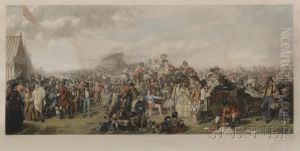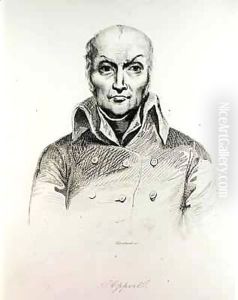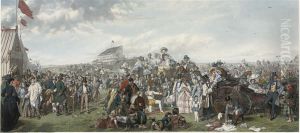Auguste I Blanchard Paintings
Auguste I Blanchard, born in 1792, was a French engraver known for his remarkable skill in engraving, particularly in the reproduction of paintings. His work was highly regarded in the 19th century, contributing significantly to the dissemination of visual arts during a period when direct access to original artworks was limited for the general public. Blanchard's engravings helped to democratize art by making high-quality images of famous paintings accessible to a wider audience.
Blanchard's career was marked by his meticulous attention to detail and his ability to capture the essence of the original paintings. He was part of a tradition of engravers who played a crucial role in the art world before the advent of photographic reproduction techniques. His engravings were often used in books, magazines, and as standalone pieces, allowing for the widespread appreciation of artworks that might otherwise be confined to the walls of galleries and the homes of the affluent.
Throughout his career, Blanchard collaborated with numerous artists and publishers, contributing to various projects that required his engraving skills. His works include reproductions of paintings by some of the most esteemed artists of his time. Despite the challenges faced by engravers in achieving recognition independently of the artists they reproduced, Blanchard's work was celebrated for its artistic merit and technical proficiency.
Auguste I Blanchard passed away in 1849, but his legacy lives on through his engravings. These pieces not only serve as historical documents of artistic trends and preferences of his era but also stand as testament to Blanchard's skill and dedication to his craft. His contributions to the field of engraving highlight the importance of this art form in the history of art reproduction and its role in making art accessible to broader audiences.


